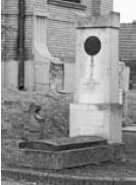This excellent composer, music teacher and musician was born in Pest on June 19, 1861, in the family of a wealthy wholesaler. Love for music is inherited from his parents. After his father’s death he leaves with his mother in Paris. At the age of fourteen he flees to Vienna, where he teaches music. He is dissatisfied with Vienna for further training in European cities, where he becomes a student of the then most famous musicians (List, F. Hiler, Kesler …). As a conductor and musician, he worked in the Viennese Theater “Ring”, in the theater in Miskolc, as a teacher of choral singing in Pest, conductor in Cluj-Napoca, Ston Belgrade and Eger.
In Subotica for the first time he comes in 1885, and works as a conductor in the theater, but remains only one season, ie. until 1886 and on March 1, 1906, he was at the head of the Music School. The city council, after the death of Ferenc Gala, prays to Lanjia to take up this duty. Lanji reorganized the music school institution and raised it to a high level. He also reorganized the work of the Craft Singing Society. Instead of the church orchestra, he founded the City Orchestra. He founded the Radical Singing Society, the Ludos Singing Society, and also prepared a Serbian Singing Society for participation in the Bacvani Competition of Serbian songs, where this company won the first prize. He worked a year on the drafting of the Statute of the Music School, which was recognized by the City Council on April 30, 1908. First of all, he composed artistic music that people called the people because of their great popularity. Thanks to him,at that time, in Bela Bartok and Pablo Kazals, in Subotica. His influence was not limited to the Hungarian choral literature, but also to the workers’ movement. The Singing Society The Food Workers’ Union chose a sign to Lanjia’s song: “Do not do the song”. He retired on August 24, 1919, but he worked as a conductor in the church of St. Theresa until her death on March 10, 1923
The tombstone is in the form of a horizontal granite slab at the base, with a inscription in the form of a cube with engraved text, a bronzed portrait in a ba-relief, the work of the famous sculptor Žigmond Štrobl, set on November 1, 1928.
TOMB OF ERNŐ LÁNYI


0 comments on “TOMB OF ERNŐ LÁNYI”